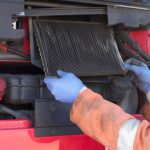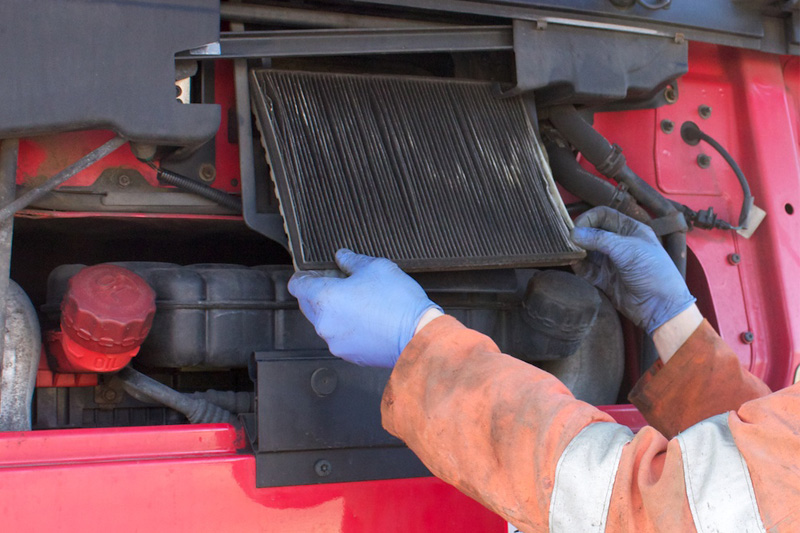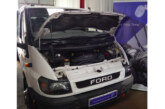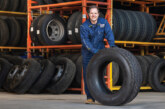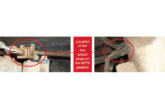Workshops can help make a positive difference to driver health by improving the quality of air in the cabin. CVW Investigates.
The advice of a good workshop technician may well help save operators money on their next maintenance invoices, but make them aware of an investment that could reduce service and operating costs over a much longer term and they are more likely to repay you with their long term loyalty.
Driver health is an important consideration for every operator, so news that a simple measure might help reduce driver exposure to a range of airborne irritants on a daily basis is likely to be well received.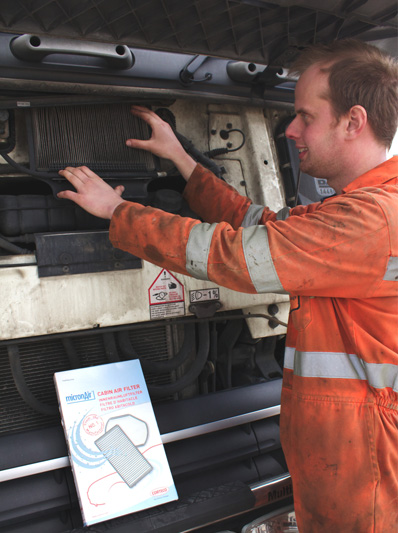
Corteco, the UK distributor of micronAir cabin filters, says air quality inside the cab can be significantly improved by more frequent replacement of the cabin filter. Part of the Freudenberg Group – one of the world’s leading manufacturers of OE cabin filters for the automotive market – its micronAir cabin filter range has part numbers available for most trucks on UK roads.
As a result, the company is well placed to provide a technical cabin filter overview and provide an opinion about more frequent replacement and the positive implications for driver health.
Particulate filtration
A cabin filter protects the occupants of the cabin, but there are different types. As long as it conforms to OE standards, a ‘standard’ cabin filter does far more than remove pollen spores. It contains a medium of specialised hi-quality non-woven fabric that delivers the small particulate filtration power required to keep the inside air clean. A cabin filter with ‘activated carbon’ features the aforementioned medium, but delivers a more thorough kind of protection. It also protects occupants from odours and pollutant gases that can irritate those to sensitive to them. Once again, this only applies if it is designed and made to conform to OE quality tolerances.
The case for improving driver health by replacing the cabin filter on a regular basis is strong. Allergy sufferers are 30% more likely to be involved in an accident, according to medial experts. Tests carried out by skin and allergy specialists show that without protection or with insufficient protection, the concentration of pollutants inside the cab can quickly build up to a position where it is six times higher than it is outside, at the kerbside. Meanwhile, evidence from studies by experts in the causes of asthma show that spores of pollen can be removed from the air by a clean, fully functioning cabin filter.
‘Regular replacement’ is recommended by vehicle manufacturers and most workshops will replace the cabin filter as part of the regular service routine. However, for most drivers, this means a new cabin filter just once a year. The problem for drivers is that vehicle operating environments are not always the same. The driver of a tipper lorry on pick ups from cement works is at risk from exposure to higher levels of dust than the delivery driver in a congested city centre. In turn, urban drivers are exposed to higher risks from road and traffic pollution than a colleague making deliveries along a rural stretch of road.
Corteco points out that an over-used cabin filter is unable to provide sufficient protection and for drivers who spend all day in the cab, this can be bad news. It can be particularly bad news for those using sleeper cabs, especially those who are sensitive to airborne irritants and the air quality is poor. There are vehicle maintenance issues too.
Maintenance schedule
Most modern fleets feature a high-performance heating, venting and air conditioning (HVAC) system where a cabin filter controls the quality of the air by removing harmful irritants. Clogged cabin filters reduce airflow and are much less efficient. The HVAC must work harder. This implies that in order to maintain protection at the required level, a cabin filter installed in a vehicle operating in environments likely to include high levels of dust particles, for example, should be subject to a more frequent replacement schedule.
The alternative is poorer quality air inside the cab and a declining performance of the HVAC. Compromised demisting properties and consequent impaired visibility add greatly to driver safety risk. Moreover, clogged filters mean overworked HVAC components, which increases the potential for premature system failure.
Corteco’s own sales figures show that the volume of oil and air filters installed on the same service replacement cycle easily outstrips the number of cabin filters sold. This suggests that cabin filters are, more often than not, ignored or replaced far less frequently. Dealerships dominate the cabin filter installation market. They fit far more cabin filters than workshops in the independent service sector.
It is likely that in the independent sector, in order to save operators money, the cabin filter is an item likely to be left unchanged for prolonged periods. Armed with the aforementioned information and faced with the prospect of losing more drivers through absence as a result of illness caused by allergy or respiratory conditions, it’s unlikely that the operators would agree and more likely that they would be happier to replace cab filters on a more frequent basis.

